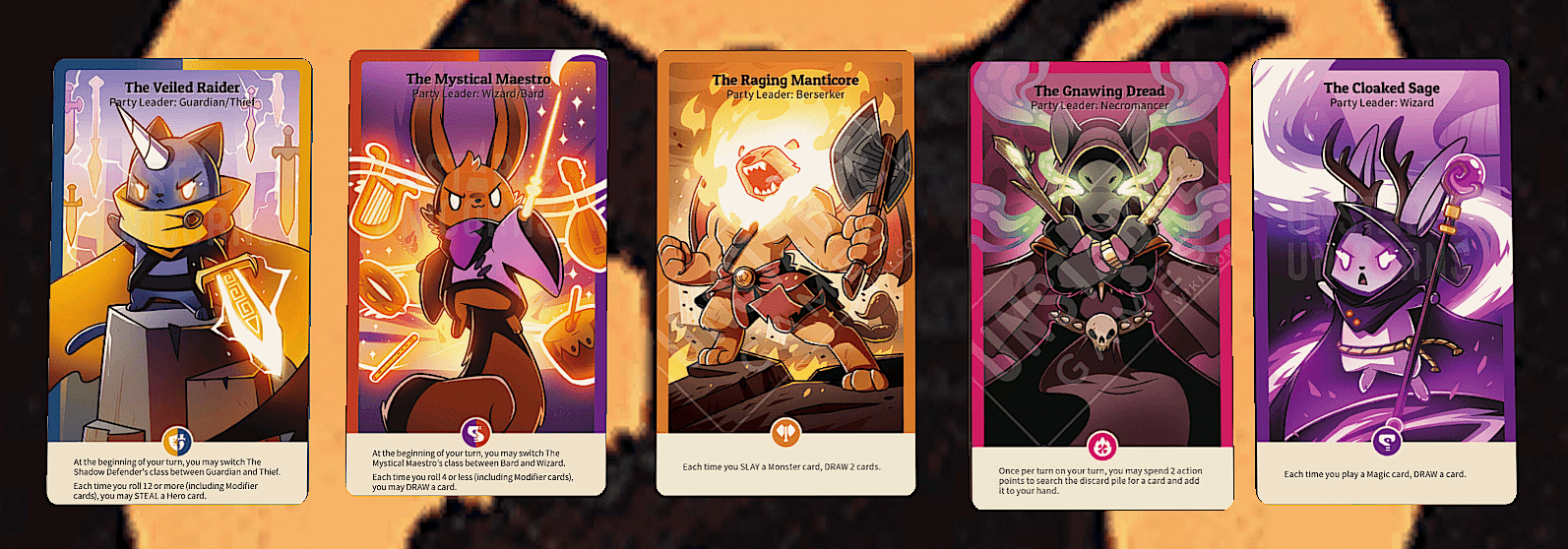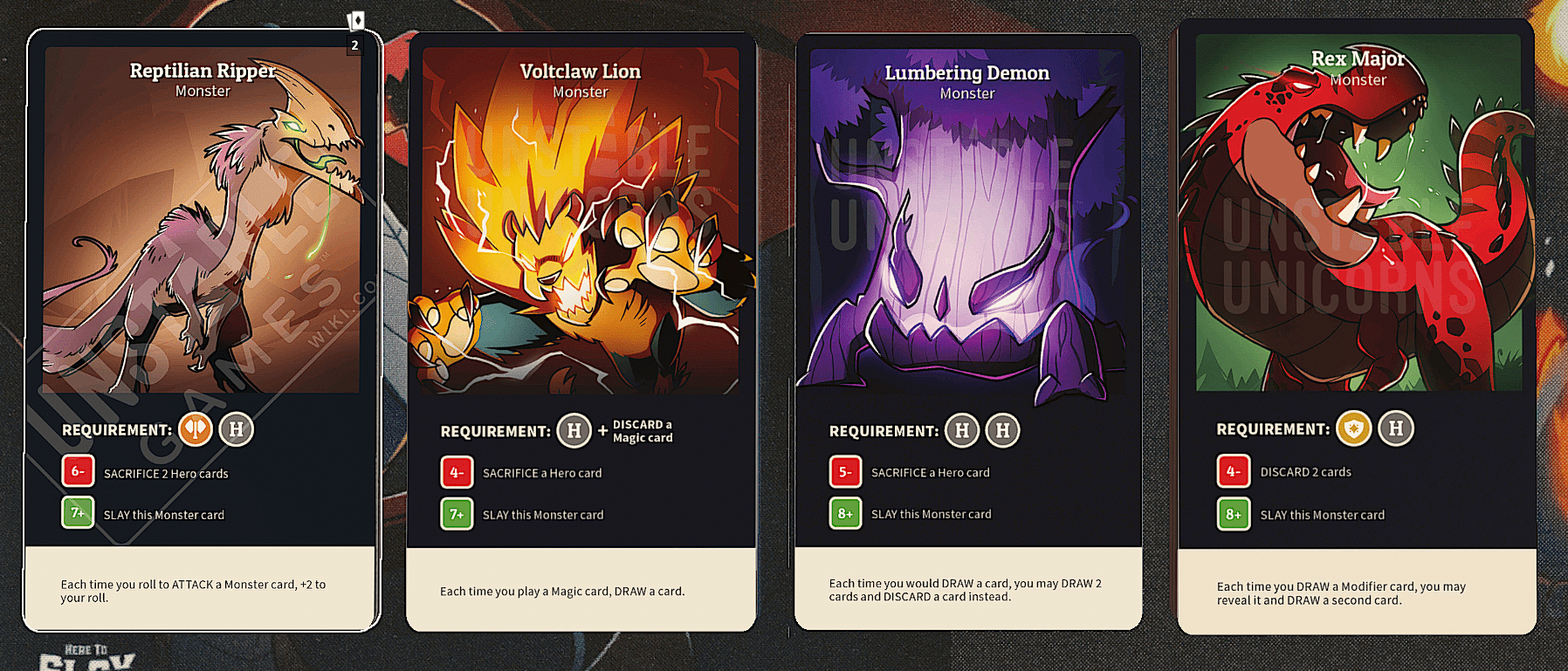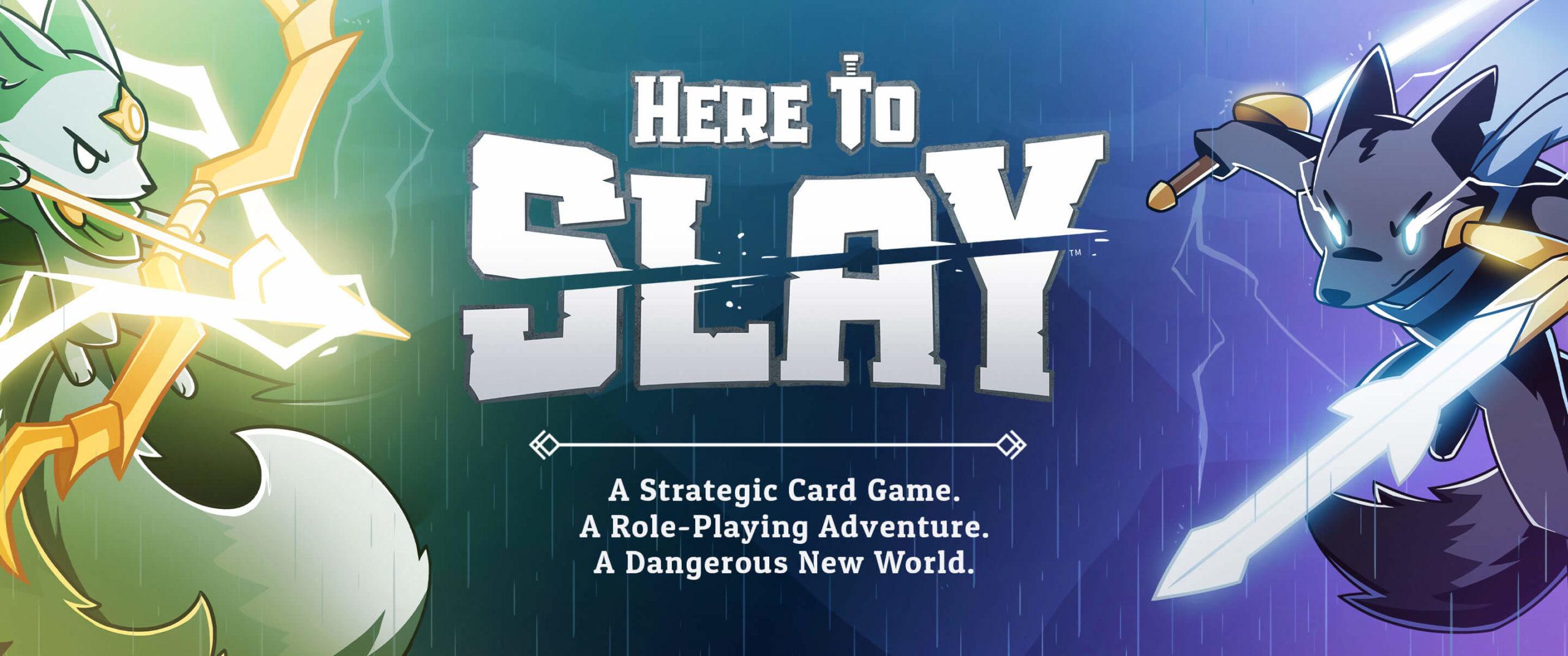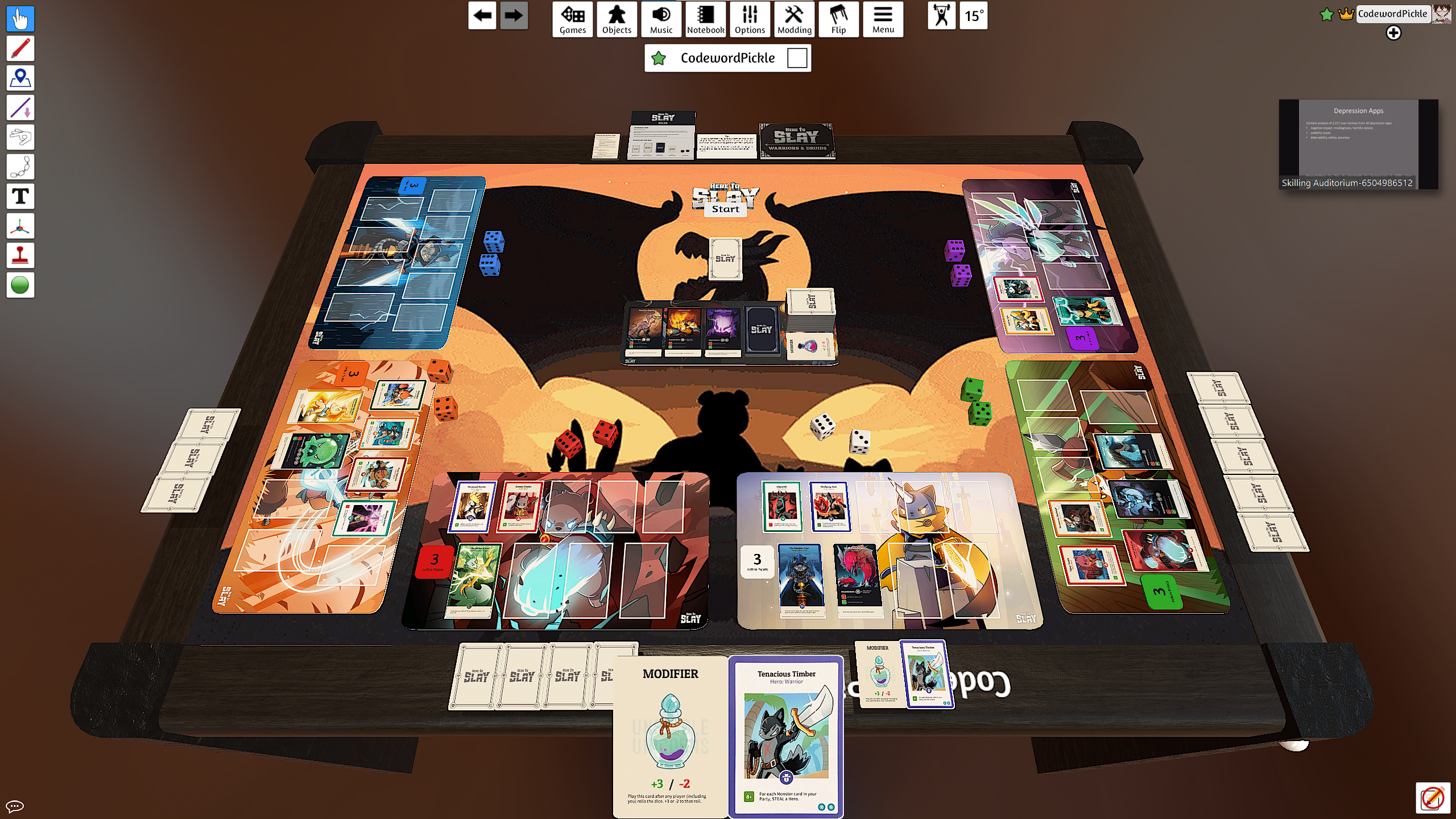Here to Slay
Created by Ramy Badie
Here to Slay is a role-playing card game in which 2-6 players must use strategy to build a team of heroes and defeat treacherous monsters. To win the game, a player needs to be the first to slay three monsters or obtain heroes from six different classes.

Here to Slay promises the user fun through fiction, challenge, fellowship, and sensation. One of the biggest appeals of the game, in my opinion, would be the role-playing aspect. It is very fun to claim the objective of slaying monsters as your own and feel immersed in the fictional context of a magical/mystical world. Additionally, there is an enjoyable challenge in trying to assemble the right collection of heroes needed to defeat a particular monster. There is also fun through fellowship, which is conveyed by the game’s sabotage mechanics. While most of the team-building and monster-fighting activities happen individually, players can interact with each other by sabotaging each other’s progress. This adds a very fun social aspect to the game.

Addressing the sensational fun of Here To Slay, the artwork on all of the cards is beautiful. The graphic design choice to include the cute animal/monster characters on almost every card feels like an intentional way to make looking at the sheer visual “coolness” of the cards in your hand part of the game’s fun. I also think the level of detail in the graphic design of the cards helps player feel more involved in the fictional fun because they have to do less mental work to bring the characters alive in their imagination.
After playing the game, I would say that it is very similar to Dungeons and Dragons (DnD) in the sense that both games try to tackle the same problem. The problem is that people want more fictional role-playing games that involve classes, monsters, and magical worlds. Both DnD and Here To Slay deliver solutions that satisfy this niche, but I would argue that they cater to different types of people. DnD offers more fun through narrative (detailed campaigns) and expression (extensive character building). These types of fun require more time and prior knowledge from the players. DnD targets close friends who are capable of committing a significant amount of time to play a game with a lot of text and narration. Here To Slay has a much broader demographic that it targets; Here To Slay is short and simple enough that it can be enjoyed amongst strangers and people who have never played a role-playing game before.
In my time playing the game, I didn’t find that Here To Slay had many protections against abuse. However, I see how it could be difficult to truly abuse another player in the game. The only way to interact with other players is through sabotage, but this requires the player to use one of their limited number of actions and luckily have the right cards to be able to sabotage. I felt as though sabotage wasn’t strongly encouraged because, at a surface level, it felt more beneficial to focus on progressing yourself rather than halting other players’ progression. I can’t imagine abuse being a significant problem in this game unless a player was really dedicated to it and was willing to give up their chance at victory.
Something I found frustrating about Here To Slay was the fact that progress is very non-linear. For example, I needed three heroes (one from the fighter class, assassin class, and any other class) to fight a monster. I spent multiple turns trying to get an assassin hero, and as soon as I did, it was destroyed because I rolled too low against the monster when I challenged it. It felt really bad to have multiple rounds of effort be wiped away by a single dice roll. This is why I think it would be nice to add some way of progressing that is more permanent than the playable heroes. For example, this could be adding weapons/armor to your main hero card, so the beneficial effects aren’t removed when you lose some of your other heroes. Generally, I think adding more ways to permanently buff your main hero would feel more gratifying, and a player’s progress would be more tangible at the end of the game regardless of the outcome.
One thing that I really enjoyed while playing was getting to see all of the different illustrations on the cards. It made me feel more motivated to play and collect more heroes because while I wanted to win, I was also just enjoying how cute the designs were. I feel like this is applicable to the game that my team is developing because it shows that visual aspects of a game can go a long way in changing the aesthetic of the game. The mechanics of playing multiple hero cards and needing 6 different classes to win creates the dynamic of collecting as many cards as possible which creates the aesthetic of a card-centric game!
Overall, I enjoyed playing Here To Slay. I think it is a fast and fun rendition of a classic style of roleplaying game.




